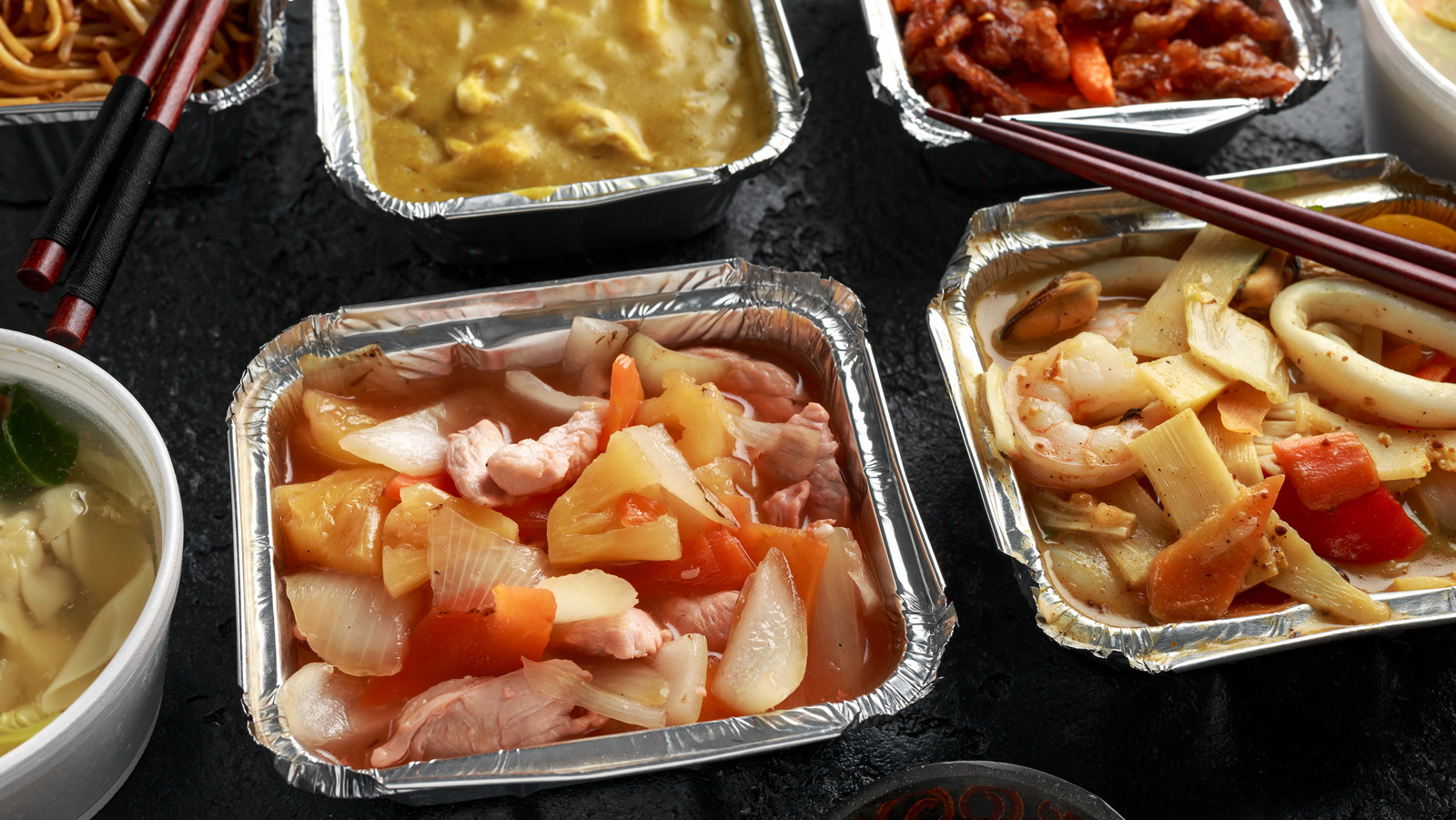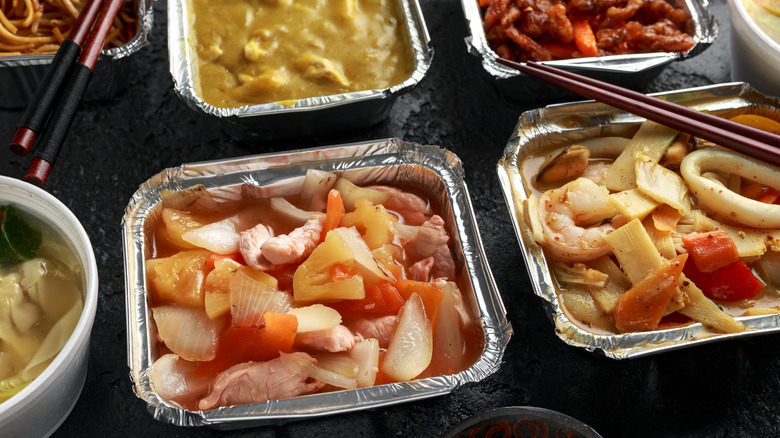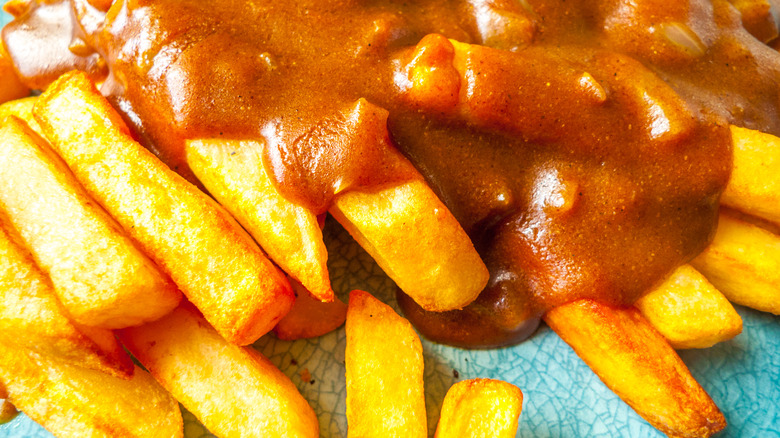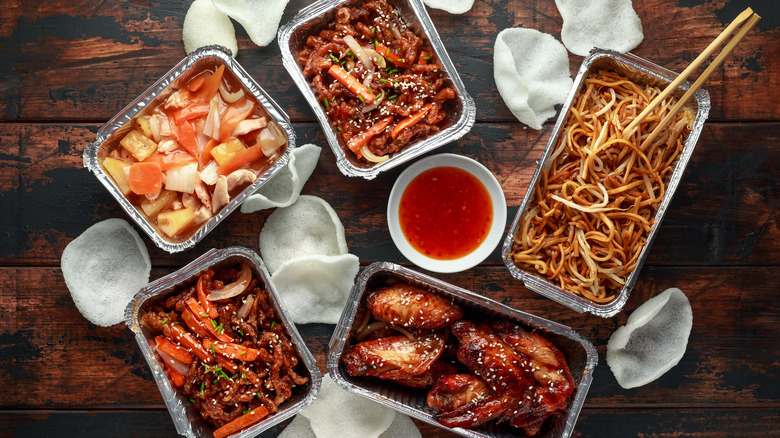As is common these days, this food discussion started on TikTok. Users from the UK were innocently sharing photos of their food when the Americans showed up, starting a battle that rivaled revolution. The metaphorical tea chests? Chinese takeout. The metaphorical Boston Harbor? Baffled TikTok duets questioning the essence of the cuisine. Americans said it was colorless. Americans said it was entirely deep fried. Americans wondered why fries were served with every meal and what the gravy was that drenched every plate.
The questions themselves were not entirely unfounded, even if they took on the exaggerated character of much internet discourse. It was simply one of those British dishes that Americans don’t understand. From fried chicken balls and chow mein noodles to fried rice and prawn chips (which is what they serve in Britain instead of wontons), much of it has a brownish hue. Also, many dishes are served with French fries—or chips, as they’re called across the pond. And most plates are littered with curry sauces of various colors. For those unfamiliar with British Chinese takeaway, the sight was appalling, and accusations of inauthenticity quickly followed. But as is the way of the internet, it shouldn’t be dismissed that way, because the cuisine has a nuanced history.
Chinese food has a long history in Britain
The history of Chinese cuisine in Britain begins in the 19th century and is under colonialism. British trade routes expanded to Hong Kong and the New Territories (part of the Hong Kong Special Administrative Region), and the expansion of shipping traffic led to numerous men from southern China being hired by English companies and emigrating to British port cities. To make a life for themselves in their new homeland, these men opened noodle shops catering to sailors and the Chinese diaspora.
After World War II, laws changed and there was an influx of immigrants, doubling the number of Chinese restaurants in Britain between 1957 and 1964. Yet many of these restaurants, particularly takeaway restaurants, were adaptable and strategic. They not only recreated dishes from their respective regions in China, but began to combine them with British staples to appeal to British diners and reach a wider customer base.
If you look at the menus of British Chinese takeaways and British fish and chip shops, you’ll probably notice some similarities. Chips, curry sauce, chicken balls and even sausages are pretty basic – and that’s no coincidence. Chinese immigrants who opened restaurants and takeaways drew on the familiar, creating a type of fusion cuisine that has endured and become one of the most popular in Britain.
American-Chinese food is similar
While the unfamiliarity of the dishes may be shocking to Americans, to dismiss British Chinese takeaway as “inauthentic” is an understatement. In fact, American Chinese food has a similar historical trajectory—the cuisine was brought into being by immigration in the mid-19th century. As the food became more widespread, it began to receive criticism for its abnormality amidst accepted “American” dishes. Over the years, the dishes went through phases of Americanization, leaning toward sweetness rather than spice to please the local palate. Because of this, Chinese food tastes different in America.
This isn’t a question of whether British or American fast food is better. Both American Chinese and British Chinese food are the product of the need to survive and thrive in an unfamiliar place, where the majority of locals wanted the familiar and rejected the “foreign.” Both cuisines are distinct entities, eclectic fusions of cultures that tell long and complex stories. Even if the flavors and aesthetics don’t seem to appeal to online consumers in the U.S., British Chinese food is an integral part of the UK’s culinary landscape.




